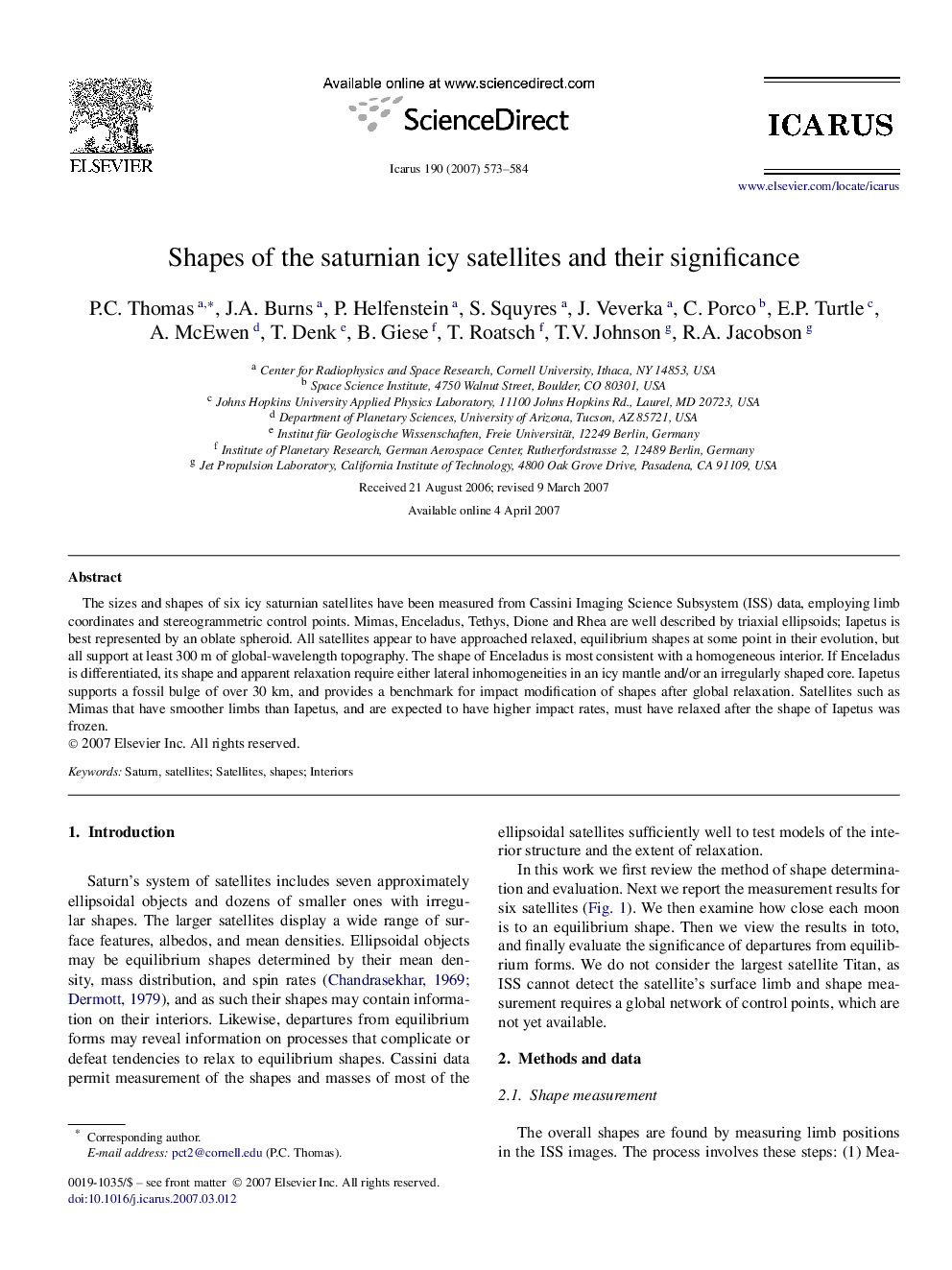| Article ID | Journal | Published Year | Pages | File Type |
|---|---|---|---|---|
| 1775304 | Icarus | 2007 | 12 Pages |
The sizes and shapes of six icy saturnian satellites have been measured from Cassini Imaging Science Subsystem (ISS) data, employing limb coordinates and stereogrammetric control points. Mimas, Enceladus, Tethys, Dione and Rhea are well described by triaxial ellipsoids; Iapetus is best represented by an oblate spheroid. All satellites appear to have approached relaxed, equilibrium shapes at some point in their evolution, but all support at least 300 m of global-wavelength topography. The shape of Enceladus is most consistent with a homogeneous interior. If Enceladus is differentiated, its shape and apparent relaxation require either lateral inhomogeneities in an icy mantle and/or an irregularly shaped core. Iapetus supports a fossil bulge of over 30 km, and provides a benchmark for impact modification of shapes after global relaxation. Satellites such as Mimas that have smoother limbs than Iapetus, and are expected to have higher impact rates, must have relaxed after the shape of Iapetus was frozen.
